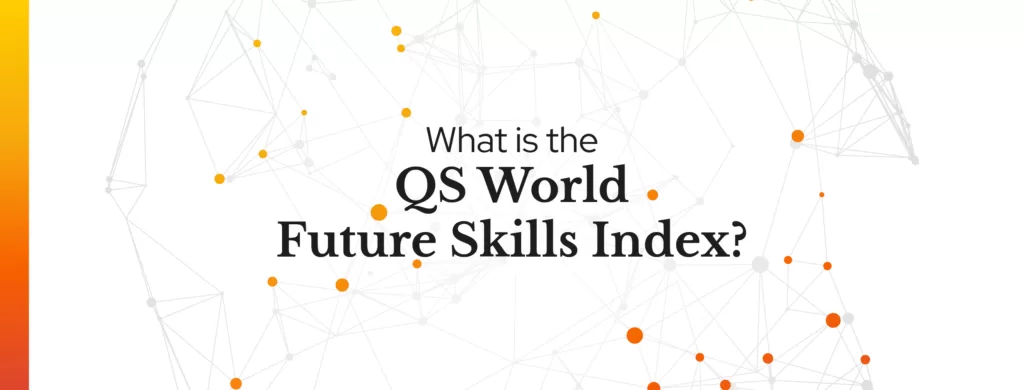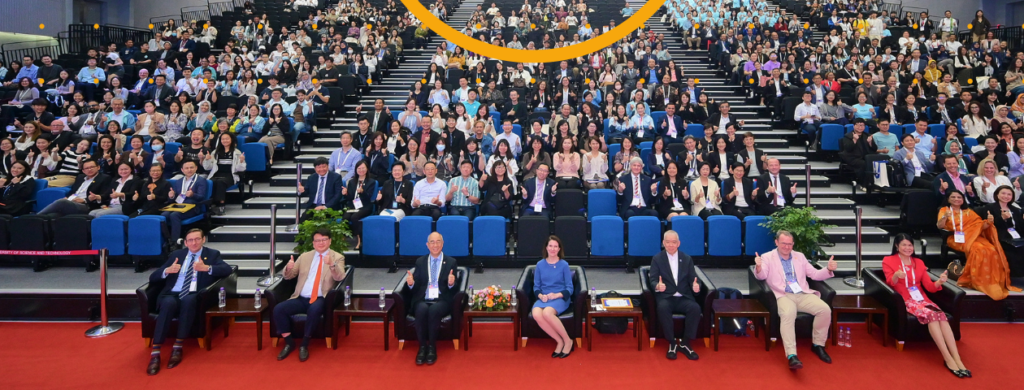
Tools enabling 24/7 connectivity and pushing the boundaries of productivity in a high-pressure work environment – what could possibly go wrong? A survey reveals that a substantial number of academics find technology ‘burdensome’. Article written for QS Insights Magazine by Claudia Civinini.
There are certain things academics shouldn’t be doing, according to Dr Charles Knight. In his current role, Dr Knight is Assistant Director, Knowledge & Innovation, at Advance HE, but earlier in his career as an academic, he recounts, he signed parking permits for students. “That’s not something academics should be involved in,” he comments.
The administrative burden has grown in academia, he says, but he thinks technology can help. While there are benefits in using tech in teaching and learning, he believes we have underestimated how it can be used for efficiency gains on the administrative side.
“There are administrative savings that we could make in terms of time, which doesn’t mean that we reduce the number of staff we have,” he explains. “It means we increase the amount of time staff have to concentrate on things they are passionate about: research and teaching.”
Tech promises to take care of administrative tasks, freeing up time for more intellectually stimulating and engaging tasks. However, there’s a catch: the successful use of edtech in an institution depends on a complex process, encompassing selection, implementation, training and clear policies.
Hiccups can happen at any stage of this process, and implementing tech without considering the existing work culture and addressing its flaws can be detrimental.
It’s easy to imagine how an innovation providing 24/7 connectivity and promising increased productivity could have negative consequences in a workplace populated by driven and passionate individuals facing intense competitiveness and, in some instances, job insecurity.
According to the WGU Labs Faculty EdTech Survey, which gathered 491 faculty members at community colleges and universities in the US, a “substantial number of faculty” find technology to be burdensome.
“A rising sense of burden, with diminishing perceptions of autonomy and influence, often leads to low morale and lower interest in remaining in and joining the profession,” the report reads.
Dr Stephanie Reeves, Senior Research Scientist at WGU Labs, tells QS Insights Magazine that the results show that while faculty recognise that technology is a valuable tool, they are concerned about how it is implemented.
“We also see that they show a lack of trust in their administrators to choose effective technology for their institution. And they feel like sometimes they don’t have a voice in the process,” she adds.
Time to rest
“There was a promise of technology, about 20 years ago, that you could be contactable any time any place,” Dr Knight comments. “It’s become the reality.”
In the WGU Labs survey results, it seems that promise has become a threat: 77 percent of respondents said they felt always on the job, while 67 percent said there were days in which they needed to take a break from technology.
Round-the-clock connectivity is particularly dangerous in an environment where people, as Dr Knight puts it, are notoriously bad at work-life balance. “It’s very common to hear academics say: ‘I was answering student emails at 11pm on a Saturday’. Which shouldn’t be common,” he says.
Add the pandemic experience to the mix, with the creation of many home offices and the ubiquity of video conferencing and instant messaging, and the boundaries between work and private life are more blurred than ever.
“You also see examples of institutions saying: ‘you should be logged on to Teams so that people can see your status when you’re available’,” Dr Knight says.
“The idea that you could be unavailable for periods of time, because you are reading or you are doing other things, has slightly been eroded and that feeds into this sense of a lack of autonomy.”
During work hours, while Edtech and AI can be used to free up space for more engaging and stimulating tasks, such as reading and research, there is a danger that it can also tempt academics into fitting more tasks in a day, leading to workload intensification.
The danger of using tech and AI to support a non-stop work environment is already a reality, as Dr Marie-Hélène Pelletier, a psychologist and workplace mental health expert, tells QS Insights Magazine.
Dr Pelletier explains that jobs in academia can often be strongly associated with a person’s identity and values, and while this has many positive advantages, it also has its drawbacks. “It can put us in a place where we try to meet all the demands possible,” she explains, pushing productivity to unhealthy levels.
“We are different from the machines,” she warns. “Our brain needs a break to perform… We need to think about managing our brain now more than ever: with all these additional ways to work 24/7 and produce more, it makes it even trickier.”
A question of culture
University leaders have agency, Dr Pelletier insists, adding that ways can be found to create boundaries, and conversations need to continue happening in order to understand where and how those boundaries can be enforced.
But it’s also a question of culture.
Over her many years of experience in academia and executive coaching, Dr Pelletier observes that productivity often comes before mental health in an academic’s list of priorities. Often, she says, the only way to convince academics to have healthy work-life boundaries is to remind them how important this is for their performance at work.
For Dr Knight, the solution lies in clear policies – and crucially, leadership teams who model the right behaviours.
“There is no excuse, there is no reason that a senior leadership figure should be emailing staff late in the evening or at the weekends,” he explains.
“If you’re sending emails to staff at four o’clock on a Saturday afternoon, you are creating the perception that they should be reading and responding to your emails at the weekend, and you are eroding their sense of work-life balance and autonomy.”
Also, he points out, there needs to be clear and sensible policies around using tools to communicate with students. In successful institutions, policies are clear. For example, staff should respond to students within three working days, not immediately, otherwise they could end up intensifying email traffic.
“When technology is introduced in a way that respects and enhances faculty autonomy, it has the potential to significantly improve staff well-being.”
A seat at the table
Another concern many academics have, Dr Knight explains, is that leadership teams are using analytics tools to make decisions, sometimes without considering the whole context.
For example, many institutions are worried about attendance, he says. “They’ll use student attendance data as a tool to say to colleagues: ‘You have to change what you are doing because attendance is poor’. Academic colleagues would say: ‘Well, hold on, you need to understand the full context: we have just come through a pandemic, there is a cost-of-living crisis.”
A sense of loss of control emerges throughout the WGU Labs survey findings as well: faculty perceived that those furthest from the classroom had the greatest influence on Edtech decisions, with students and faculty having the least influence, and over half (53 percent) of faculty felt they would have less autonomy over the course design with a more pervasive use of technology.
“Psychological research underscores the significance of perceived control and autonomy in our wellbeing,” Dr Omid Fotuhi, Director of Learning and Innovation at WGU Labs, explains.
“Ultimately, when technology is introduced in a way that respects and enhances faculty autonomy, it has the potential to significantly improve staff well-being.”
Dr Reeves explains that empowering staff by involving them in the selection and implementation process, and regularly seeking their feedback, is essential to ensure that technology becomes a valuable tool rather than a burden, she explains.
However, this doesn’t always happen. “From our survey, we see that faculty don’t feel they have a voice and want to have more of a seat at the table in those conversations,” Dr Reeves comments. She adds that the biggest mistake leaders make when implementing technology is not involving faculty in the process.
According to the results of the Administrator Edtech Survey, this is not an uncommon mistake. Nearly half (48 percent) of administrators said their institution conducts technology audits less than once a year, while 30 percent said their institution seeks feedback from faculty less than once a year.
Dr Knight comments: “Leaders need to understand that when they introduce new technology, often the communication of why they’re introducing the technology and its benefits are not very clearly articulated. And they need to be really clear and say to colleagues: ‘if something goes wrong, it’s not your fault. It’s an institutional responsibility that we share’,” he adds.
Considering the existing culture is also a crucial element of successful tech implementation, he adds, as well as training and development.
However, he points out, “we could have a more utopian future, but it requires leadership teams to be really instrumental in thinking about how we introduce this.” A question of identity.
Ultimately, as technology and AI change our work environment, reflections on identity and purpose take centre stage.
Betheny Gross, WGU Labs Research Director, comments: “In our surveys, we found faculty are wondering about what their role is with these tools, and I think it’s an important question for the higher education sector.”
This is true in every sector. Dr Pelletier explains: “Studies have shown that AI adoption can lead to employee stress, lower organisational commitment, and reduced productivity.
“The American Psychological Association’s 2023 Work in America Survey shows one clear finding: technological advancements are connected to worries and worries are connected to psychological well-being. Nearly 4 out of 10 US workers (38 per cent) are worried AI may make some, or all, of their job duties obsolete in the future.”
She explains that a sense of discomfort and loss of control generated by the introduction of new technology is normal; however, if leadership teams listen to staff’s concerns and address them through clear policies, that discomfort should settle.
The imperative to involve academics in tech implementation is crucial from a psychological and ethical perspective to determine what tasks we want humans to still do, she insists.
“It’s not just because technology can do something that we want to let technology do it,” she explains. “Either because the outcome may be better if a human performs the task, or because we want to ensure that people continue to have, as part of their job, something that they value and connect with.”



